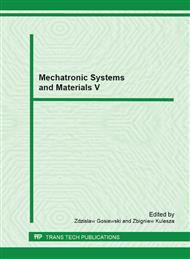p.235
p.241
p.247
p.253
p.261
p.267
p.273
p.279
p.285
An Investigation of the Automatic Relative Gravimeters
Abstract:
The laboratory and field investigations of the several automatic gravimeters Scintrex CG_5 with a quartz elastic system used for the determining of gravity acceleration were performed. Research on characteristics of four gravimeters includes a five-year period. The data consists of gravimetric observations at a laboratory, on the gravimetric testline and at the points of the Lithuanian gravimetric network. The evaluation of the phenomena of the spring systems of the gravimeters was made. The stress on the estimation of the zero drift at a laboratory and field investigations was done. It was detected that zero drift does not exceed 500 μGal per day with a diapason of 200 μGal. The zero drifts per hour do not exceed 25 μGal, mostly they are under 10 μGal. According to the annual calibration results the character of the changes of the linear scale coefficients of the gravimeters were analysed too. The calibration base of 270 km length in Lithuania where the difference of the gravity acceleration of the end points is 201 mGal was used for investigations. The research showed that the biggest deviation from the unit of the linear scale coefficients does not exceed 0.013. It was noted, that the values of the linear scale coefficients of the gravimeters have a tendency to decrease. Also was noted, that the values of the linear scale coefficients have a tendency to decrease in the period between field works, and to increase - in the field works period. So the calibration of the gravimeters should be carried out before and after the field works. Based on measurements carried out during development of the Lithuanian gravimetric network, which consists of 686 gravimetric points, accuracy of gravity acceleration increments was assessed. The comparison of the observations results against the results, obtained by the LaCoste and Romberg gravimeters with metal elastic system, is presented too. The total number of common points is 51. It was stated, that the differences of the gravity accelerations measured by the different types of gravimeters at gravimetric points do not differ more than 10 μGal, therefore maximum difference of 25 μGal was received. The standard deviations of the gravity accelerations of the gravimetric points do not exceed 7 μGal. Such results show the good performance of the SCINTREX CG_5 gravimeters.
Info:
Periodical:
Pages:
261-266
Citation:
Online since:
March 2013
Keywords:
Price:
Сopyright:
© 2013 Trans Tech Publications Ltd. All Rights Reserved
Share:
Citation:


